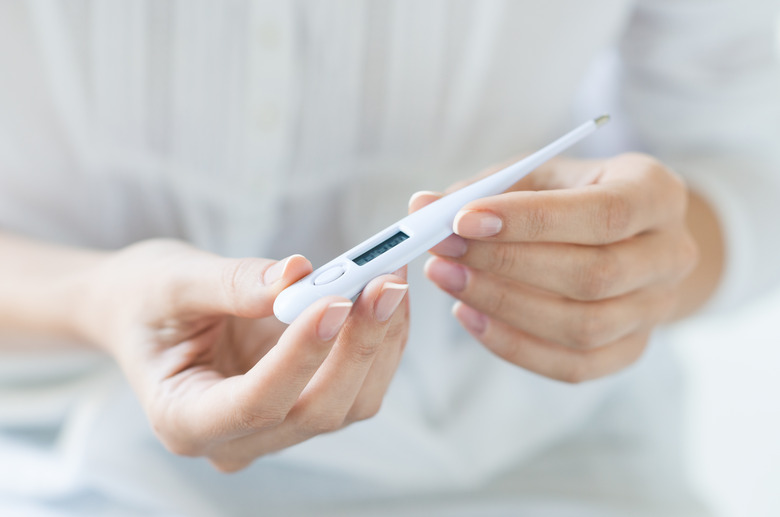Tools Used To Measure Temperature
Most people would say that thermometers measure temperature, and that's true, but there are many different kinds. The thermometer you use to take your temperature when you're sick isn't much help when measuring the temperature of melted lead. Moreover, some things are too small, too big or too distant to use a standard bulb thermometer to determine their temperature.
Liquid Expansion Thermometer
Liquid Expansion Thermometer
A standard thermometer is usually a bulb or a spring thermometer. Both work by having a liquid, either alcohol or mercury, enclosed in a vacuum, and the liquid expands as the temperature rises. Colored alcohol or mercury rises along a scale in a bulb thermometer whereas expanding liquid rotates a spring to turn an indicator needle around along a circular scale on a spring thermometer. Thermometers now often have digital scale displays.
Thermocouples
Thermocouples
Temperature is sometimes measured by a thermocouple. Two metal leads of dissimilar metals are placed in close proximity to each other, creating voltage. Changes in voltage correspond to changes in temperature. Thermocouples are used in industry, and are often connected to other devices that turn mechanisms off and on in response to certain temperatures. Thermocouples are not as accurate as thermometers.
Resistance Temperature Detector
Resistance Temperature Detector
Thermocouples are increasingly being replaced by resistance temperature detectors, or resistance thermometers. RTDs are generally more stable and accurate than thermocouples; they use carbon or platinum sensors to detect changes in electrical resistance. These changes are caused by temperature changes, and the changes are predictable. A consistent light current is passed through the RTD, past the leads, and then resistance can be determined and temperature calculated.
Pyrometer
Pyrometer
A pyrometer measures the surface temperatures of objects. It is a tool that combines an optic feature with a temperature reader constructed of an ultrathin filament. The pyrometer is aimed at the surface of an object, whereupon the optic device focuses on the thermal signature – or radiated heat – and transfers that signature to the filament reader. These are especially useful for measuring temperatures on surfaces that are out of reach or too hot to touch, like steam boilers, metallurgy furnaces and hot air balloons.
Langmuir Probe
Langmuir Probe
Irving Langmuir was a Nobel Prize winning physicist. Langmuir wanted to learn how to take the temperature of electrons as part of his research to learn about the electrical potential of plasma, a gas-like condition of matter in which some particles lose electrons. Langmuir invented a device called the Langmuir probe that does just that, by placing electrodes in the plasma, then measuring currents in the plasma. Langmuir probes are not in everyday use.
Infrared Sensor
Infrared Sensor
Detecting infrared radiation is another way to measure heat. When you look at things, you see visible light; a red fire truck looks red whether the temperature is at 0 or 100 degrees Fahrenheit. But if you look at objects through an infrared detector, you can see "heat signatures," that is, changes based on temperature. By attaching a meter that measures infrared light frequency, the infrared thermometer can – like the pyrometer – take surface temperature measurements from a distance.
Cite This Article
MLA
Goff, Stanley. "Tools Used To Measure Temperature" sciencing.com, https://www.sciencing.com/tools-used-measure-temperature-8243342/. 5 April 2018.
APA
Goff, Stanley. (2018, April 5). Tools Used To Measure Temperature. sciencing.com. Retrieved from https://www.sciencing.com/tools-used-measure-temperature-8243342/
Chicago
Goff, Stanley. Tools Used To Measure Temperature last modified March 24, 2022. https://www.sciencing.com/tools-used-measure-temperature-8243342/
